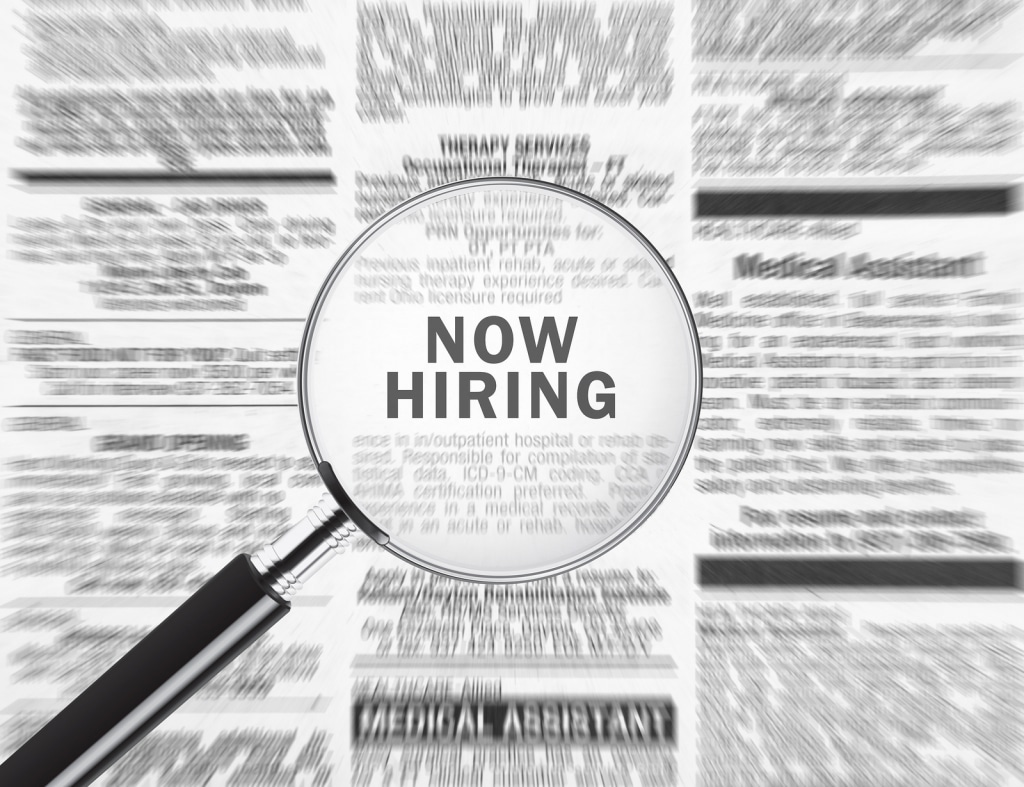Mergers & Acquisitions: How Agency Consolidation Will Affect Travelers

Global mergers and acquisitions reached a new milestone–2017 marked the third year that more than 50,000 deals were made, according to a report in Harvard Business Review, and the healthcare staffing industry was no exception. This trend is expected to continue through 2018, and the industry has already seen its first acquisition. Medical Solutions, one of the top staffing firms in the U.S. in terms of market share, announced the acquisition of PPR on Feb. 9. PPR provides travel nurse staffing and interim leadership for acute and post-acute markets. As part of the transaction, PPR will continue to operate as its own brand and will keep its offices in both Jacksonville and Tampa, Fla., according to a press release announcing the deal. For travelers, staffing industry mergers mean fewer choices As with any industry, consolidation means fewer choices, and that’s the case here. As these staffing companies merge and are acquired, the nurses that use them are faced with fewer and fewer options, said StaffDNA vice president Stephen Gillem. That could negatively affect pay rates and quality of service these agencies provide. The loss of choice could feel especially felt by a specific group of nurses, those who are labeled “Do not hire.” With fewer agencies representing more hospitals, if a nurse is marked “do not hire” by an agency it becomes harder for that nurse to find a new position just by moving to a new agency. Mergers and acquisition as growth strategy The Medial Solutions/PPR acquisition is somewhat surprising, Gillem said, because PPR, just last year, was one of the companies doing the acquiring when it bought 360 Healthcare Staffing. PPR wasn’t the only company to make major moves in past few years. Cross Country Healthcare acquired Advantage RN for $88 million, Travel Nurse Across America acquired Trinity Healthcare Staffing Group in January 2017, and Advanced Travel Nursing acquired both Rise Medical Staffing and IPI Travel Nursing in 2016. Gillem expects these medium to large players to continue consolidating with competing firms because it’s an easy way to spur company growth over organic methods, he said. “It can be hard if you’re a smaller company to compete now on the healthcare traveler national stage if you don’t have that reach,” Gillem said. “You’ve got to have the money for marketing, website optimization, and a robust back office for items like compliance.”
Travel Nursing Jobs: Midwest States To Consider

Part of the appeal of a travel nurse career is the adventure–the opportunity to discover places you’ve never been before. But those places aren’t just on the coast or in the mountains. There are literally travel nursing jobs everywhere, and America is a big place. We want to take a look at some of those markets that you may have missed in your last job search. We start in the Midwest. Illinois travel nursing jobs Where are the jobs: All over, and more are being added every day. What specialties are these hospitals looking for: Any and all, the jobs are plentiful How quick are the hospitals hiring: Almost immediately. Most interviews are being done the same day resumes are submitted. How easy is it to get a state license: This is where it can get tricky in Illinois. It takes between four and six weeks for a state license to be issued, so accepting your first Illinois assignment takes a bit of preparation. Where many get hung up is submitting an incomplete file. When the state receives an incomplete file, it uses the U.S Postal Service to notify the nurse and requests missing documents be sent back to the state in the same way. That creates a nearly two week delay. Then once the state receives the documents, the four- to six-week clock starts over. So, if you aren’t careful, getting an Illinois nursing license can become a months long process. One way around this, if you’re applying from a neighboring state, is to go to either Chicago or Springfield to the state nursing board’s offices with your full file and ask for a review before you submit your application for a license. It will still take up to six weeks to get the license, but you avoid those delays caused by missing documents. Indiana travel nursing jobs Where in the state are the jobs: Obviously, there are jobs in Indianapolis, but there are also several opportunities in Fort Wayne and Evansville. What specialties are these hospitals looking for: Right now there seems to be a growing number of Med Surg/TELE positions as well as ICU How quick are the hospitals to hire: The answer here obviously depends on the facility, but some hospitals are interviewing the same day candidates are submitted. How easy is it to get a state license: Indiana is not a member of the Enhanced Nursing Licensure Compact, so before accepting a placement there you’ll need a temporary license. Indiana isn’t a walk-through state either, so make sure you leave two to four weeks for the state to issue your license once it’s received all of the required documentation. The license is valid for 90 days. Here are the documents you’ll need to provide: Completed application — notarization is required for a temporary license A 2 ½ X 3 ½ Photo signed on front Proof of current active license Verification of original state license Verification of ALL licenses held, current or expired Completed fingerprint card, not complete prior to sending in the application Missouri travel nursing jobs Where are the jobs: Sedalia, Springfield, St. Louis and surrounding cities What specialties are these hospitals looking for: Med Surg & TELE RN’s are the biggest needs at this time. How quick are the hospitals to hire: Interview typically happen within 48 hours How easy is it to get a state license: Missouri is a compact state, so if you already have a multistate license then you are cleared to work. If you don’t have a multistate license, Missouri is a walk-through state. Go to the board of nursing in Jefferson City and you can leave with an active Missouri temporary license. When you go, you’ll need a completed application, a copy of your current active state license, and proof of your fingerprint registration.
Healthcare Roundup: Stories You May Have Missed

Healthcare continues to struggle with controlling rising costs. Headlines this week featured a few interesting solutions: Artificial Intelligence. Micro-hospitals. Those stories and more are highlighted this week in the stories you might have missed. Lyft teams with Allscripts to get patients to doctor appointments The ride-sharing service is integrating its software with Allscripts to make it easier for physicians to schedule rides to appointments for patients who need them. Want to use AI to impact healthcare? Give it the mundane jobs. “… the greatest opportunity for AI in the near term may come not from headline-grabbing moonshots but from putting computers and algorithms to work on the most mundane drudgery possible.” The real opioid problem may be in the hospitals Health officials report they are struggling to keep their pharmacies supplied with the opioids needed to treat patients, forcing them to find other courses of treatment and wondering when their supplies can be restored. Are micro hospitals the next step in controlling healthcare costs? These smaller facilities–some as small as 8 beds–are seen as good alternatives to larger community facilities, performing the same procedures at a lower cost. They are also considered realistic options for more rural areas that can’t support bigger hospitals. A study says babies that resemble their fathers are healthier Why? Because when the baby looks like the dad, the dad knows with more certainty the child is his and spends more time with the child. That means he is more in tune with the baby’s health needs.
Compact License Update: Kansas Makes Progress; Low Demand for Wyoming Licenses

The Kansas legislature has moved quickly on HB 2496 in the past two weeks, meaning Kansas could join the 29 other states in the enhanced Nursing Licensure Compact as early as next year. The bill was introduced to the House on Jan. 17 and promptly moved to the Committee on Health and Human Services the next day. After a small amendment bumping up the implementation date, the bill passed the House with almost unanimous support last Thursday. The Senate pushed the bill to the Committee on Public Health and Welfare this week, and legislators will resume session after the weekend. If the bill passes, Kansas nurses could potentially obtain new compact nursing licenses by January 1, 2019, according to the bill supplement. Kansas is one of seven states attempting to pass legislation to join the eNLC, which went into effect on Jan. 19 this year. The other states are Illinois, Michigan, Massachusetts, New York, New Jersey, Rhode Island and Vermont. Wyoming: Low demand makes for easy eNLC transition Wyoming’s had an easier time addressing multi-state license demand compared to the others as one of the five new states to join the compact, Jennifer Burns, practice and education consultant for the Wyoming State Board of Nursing, said there have been less than 100 applications for new compact nursing licenses or upgrades from normal licenses. There are approximately 13,000 registered nurses and 1,100 licensed professional nurses in the state as of December 2017. “We’re a small state in number of licensees,” Burns said. “We’re not seeing any delays in processing applications. We were well prepared. To be honest, most of our home-state nurses like to live in the communities where they work.” Despite the low numbers, Burns said the state still sees traffic from travelers on a fairly consistent basis. Wyoming jumped significantly in the rankings for most applications submitted from travelers by state for February, moving from the 45th most popular state to the 37th, according to StaffDNA data. “I don’t know if there will be an increase in opportunity for travel nurses, but it will certainly decrease the time it takes for travelers (with compact nursing licenses) to come here,” Burns said. “A lot of travelers come to our state, so there’s the benefit of that for us being a part of the eNLC.”
Here’s Why Establishing A Tax Home Is Important For Travelers

Thanks to President Donald Trump’s approval in December of the most extensive changes to U.S. tax law in the past 30 years and the recent start of income tax filing season, millions of U.S. citizens have taxes on the brain, travel nurses included. The new tax changes won’t affect the filing process for 2017 taxes. They do eliminate employment expense deductions starting this year, but they won’t affect the tax-free stipends available to travelers, as long as they’ve established a tax home. But what is a tax home? For a busy professional who regularly has to travel for business, qualifying for tax-free stipends is a simple process, but for travelers, it’s a bit more complex. Definition and benefits of a tax home The IRS Tax Code defines a tax home as the geographical area where workers earn most of their income, which may not be the same place as their permanent residence–the place where they own a home, where their family lives or where they’ve been issued a driver’s license. As an example, say an employee works for a company in Michigan eight months out of the year, but that person owns a home in Wyoming to stay close to relatives. The employee’s company asks him to travel back to Wyoming for a business-related reason, so he decides to stay at home because it’s easier than booking a hotel for a weekend. Even though this person traveled to their personal residence, the employee’s travel expenses are still technically deductible because he is leaving his tax home on business. Having a tax home means big savings in terms of a travel nurse’s ability to accept tax-free stipends, or per diems, which can add up to anywhere from $20,000-$50,000 in tax-free benefits. “This can result in $6,000-$9000 per year in tax savings,” said Joseph Smith, a travel nurse tax expert and owner of TravelTax.com. “But then you have to remember to subtract your living expenses from that (savings figure),” Smith said. “If you’re paying 600 a month for an apartment, which is then $7,200 a year, that’s a significant amount from savings. That’s why you don’t see travelers living in places like San Francisco unless they have a tax home due to a regular job in the area.” Some travel nurse staffing agencies also won’t give contracts to nurses who don’t have a tax home in order to avoid being penalized during an IRS audit because of a travel nurse who accepted tax-free stipends without a tax home. Criteria to qualify for a tax home If this geographical definition was the only one used to determine who has a tax home, travelers would never qualify since the job requires frequent relocation, meaning there’s not one place where they earn a majority of their income. Thanks to clarifications of the code in IRS Publication 463, three factors are used to determine tax home status. At least two of these three criteria must be satisfied in order to qualify for a tax home. If only one factor is met, that person is considered an itinerant worker, meaning their tax home is their permanent residence and they don’t qualify for tax-free stipends or reimbursements. You perform part of your business in the area of your main home and use that home for lodging while doing business in the area. You have living expenses at your main home that you duplicate because your business requires you to be away from that home. You have a member or members of your family living at your main home or you often use that home for lodging. Since most travelers don’t work at home, they often try to meet the second and third criteria to establish a tax home. The third criteria is easy enough to meet by returning regularly to a home or apartment owned or rented, but their tax home status could be disrupted by not matching duplicate expenses. Duplicate expenses While it’s not stated in bold print, duplicate living expenses need to be significant enough to meet the second criteria. For example, say a traveler rents an apartment for $800 per month in their home state of Arizona, and leaves for a five month job in Colorado. They have a friend in Colorado who owns a home and will let them stay in a spare room for $50 a month while they’re working. Even though the traveler is paying the friend to stay there, that incredibly low “rent” charged by their friend won’t qualify as duplicated expenses. That traveler would need to at least pay fair market value for rental of the space, which differs based on location but can be determined by comparing local rental listings for similar properties. Temporary worker status It is possible for travelers to avoid paying duplicate expenses and still qualify for a tax home by meeting the first criteria and planning to work some in their home state, but they must make sure they are a significant distance away from their permanent residence or risk losing their temporary worker status. A temporary worker is someone who fulfills job appointments lasting 12 months or less, according to the U.S. Department of Labor Statistics. If a traveler works for more than a year in a single geographic area, it’s considered an indefinite job appointment. That means their previous tax home is moved to their current job because it’s their new primary location of income, and they are classified as an “itinerant” worker. This rule applies even with short-term contracts. If a traveler plans to work in a location for eight months, then accepts another five month contract in the same area but at a different hospital, the job assignment would still be considered indefinite rather than temporary since they planned to stay for 13 months total in the same geographic region. Unfortunately, there isn’t a specific distance a traveler needs to be away from their previous placement to be considered safe, and the “50-mile” rule travelers might hear about is not
